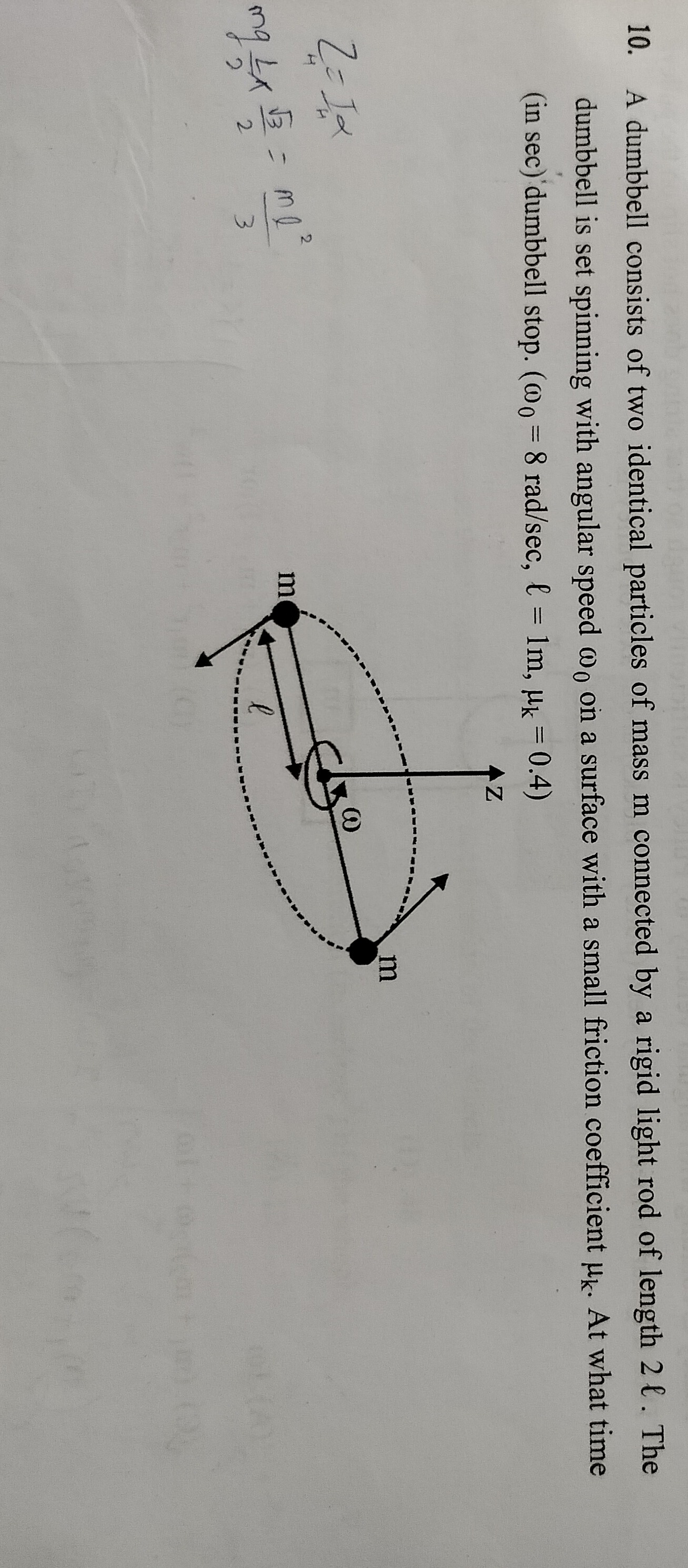Question
Question: A dumbbell consists of two identical particles of mass m connected by a rigid light rod of length 2 ...
A dumbbell consists of two identical particles of mass m connected by a rigid light rod of length 2 l. The dumbbell is set spinning with angular speed ω0 on a surface with a small friction coefficient μk. At what time (in sec) dumbbell stop. (ω0 = 8 rad/sec, l = 1m, μk = 0.4)

2.04
Solution
The dumbbell consists of two identical particles of mass m at a distance l from the center, connected by a light rod of length 2l. The axis of rotation passes through the center of the rod.
-
Moment of Inertia (I): The moment of inertia of the dumbbell about the axis of rotation is the sum of the moments of inertia of the two particles. For a point mass m at a distance r from the axis, I=mr2. Therefore, I=m(l)2+m(l)2=2ml2.
-
Frictional Torque (τ): The kinetic friction force on each particle is fk=μkN, where N is the normal force. Since the particles are on a surface, N=mg. So, fk=μkmg. This friction force acts tangentially, opposing the motion, at a distance l from the axis of rotation. The torque due to friction on one particle is τ1=fk×l=(μkmg)×l. Since there are two such particles, the total frictional torque is τ=2×(μkmgl)=2μkmgl. This torque causes angular deceleration.
-
Angular Deceleration (α): Using Newton's second law for rotation, τ=Iα. The torque opposes the angular velocity, so we consider its magnitude. α=Iτ=2ml22μkmgl=lμkg.
-
Time to Stop (t): We use the rotational kinematic equation ωf=ω0+αt, where ωf is the final angular velocity, ω0 is the initial angular velocity, and α is the angular acceleration. Since the dumbbell stops, ωf=0. The acceleration is negative as it opposes the motion. 0=ω0−αt t=αω0=lμkgω0=μkgω0l.
-
Given Values: ω0=8 rad/sec l=1 m μk=0.4 We use the standard value for acceleration due to gravity, g=9.8 m/s².
-
Calculation: t=0.4×9.8 m/s28 rad/sec×1 m=3.928 sec≈2.04 sec.
